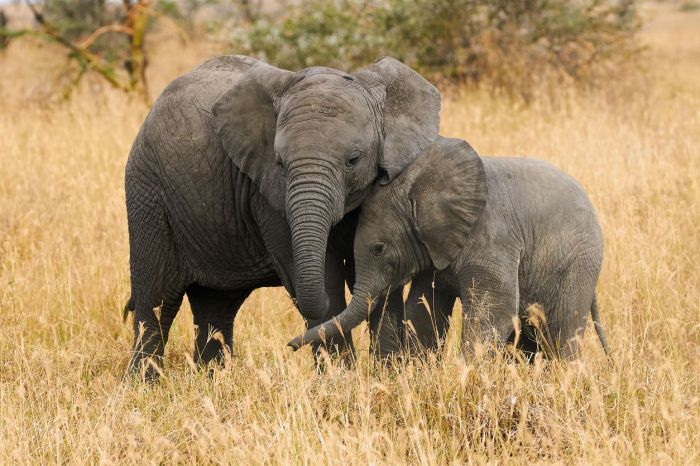Who’s the daddy elephant edition answer key – Embark on a captivating exploration of the fascinating topic of paternity in elephant society with our comprehensive guide, “Who’s the Daddy Elephant Edition: Answer Key.” This in-depth analysis unveils the intricate social dynamics and genetic mysteries that shape elephant family structures, leaving no stone unturned in our quest to unravel the true nature of elephant fatherhood.
As we delve into the depths of this captivating subject, we will uncover the secrets of elephant paternity through genetic testing, examine the distinctive physical characteristics that differentiate male and female elephants, and witness firsthand the courtship rituals and social interactions that govern mating within elephant herds.
Paternity in Elephant Society

Elephant herds are highly structured, with a matriarchal hierarchy where the oldest and most experienced female leads the group. These female elephants play a significant role in determining which males will be allowed to mate, thereby influencing the paternity of calves within the herd.
Genetic testing is used to determine paternity in elephants, which helps in understanding breeding patterns and managing conservation efforts. Studies have successfully identified elephant fathers using DNA analysis, providing valuable insights into the genetic diversity and social dynamics of these magnificent animals.
Identifying the Daddy Elephant
Male elephants, known as bulls, are typically larger and have distinctive physical characteristics compared to females. Their tusks are longer and more curved, and their heads are broader and flatter. The size of an elephant’s ears can also indicate its gender, with males generally having larger ears.
| Feature | Male | Female |
|---|---|---|
| Size | Larger | Smaller |
| Tusks | Longer and more curved | Shorter and straighter |
| Head | Broader and flatter | Narrower and more rounded |
| Ears | Larger | Smaller |
Behavioral Cues and Social Dynamics
Male elephants exhibit courtship behaviors to attract females. These behaviors include trumpeting, head-bobbing, and mock charges. The presence of other males can influence mating dynamics, leading to competition and aggression among bulls. Male elephants often engage in dominance displays and physical fights to establish their status and access to females.
Social interactions between male elephants and their offspring are typically limited. Male elephants usually leave the herd after mating, and they do not provide direct parental care. However, there have been exceptional cases where male elephants have been observed protecting and interacting with their young, demonstrating a rare paternal instinct.
Role of the Father in Elephant Families, Who’s the daddy elephant edition answer key
Male elephants have a limited involvement in raising their young. After mating, they typically leave the herd and have no further contact with their offspring. This is due to the long gestation period of elephants and the complex social structure of their herds, where females play a dominant role in nurturing and protecting the calves.
However, there have been rare observations of male elephants providing paternal care. In some cases, older bulls have been seen associating with younger elephants, offering protection and guidance. These exceptional cases highlight the potential for paternal instincts in male elephants, even though it is not a common behavior in their species.
FAQ Section: Who’s The Daddy Elephant Edition Answer Key
How is paternity determined in elephants?
Paternity in elephants is determined through genetic testing, which analyzes DNA samples to identify the father of a calf.
What are some physical characteristics that distinguish male elephants from females?
Male elephants are typically larger than females, with larger heads, more prominent tusks, and a more muscular build.
How do male elephants establish dominance within a herd?
Male elephants establish dominance through physical strength, aggressive behavior, and social alliances.


